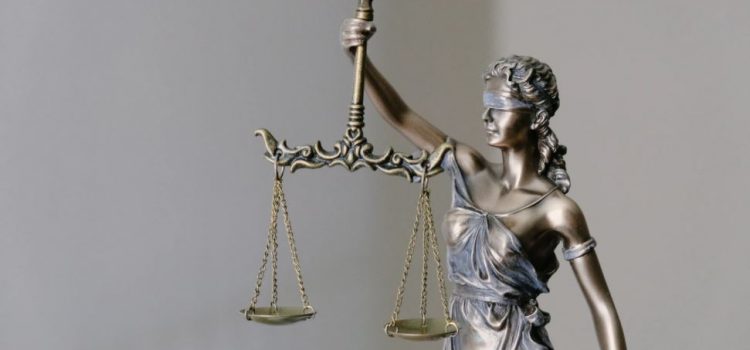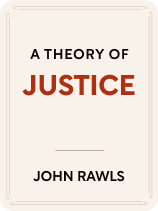

This article is an excerpt from the Shortform book guide to "A Theory of Justice" by John Rawls. Shortform has the world's best summaries and analyses of books you should be reading.
Like this article? Sign up for a free trial here.
What is John Rawls’s theory of justice as fairness? What would citizenship under the justice as fairness paradigm look like in the real world?
Justice as fairness is the theory of justice resulting from the original position: a hypothetical scenario where a group of equals envisions a just society by means of unbiased, rational debate. Rawls argues that a fairly just society should allow people to live however they like, albeit with a few exceptions.
Here are three areas where Rawls believes society should enforce certain duties and values.
#1: Duties to Society
According to John Rawls’s theory of justice as fairness, people should be free to pursue their own self-interest. However, Rawls highlights several duties that should be followed by absolutely everyone in society. Let’s explore each and examine how they accomplish this goal:
Duty #1: Follow Existing Just Rules
The first duty is to follow existing rules and laws in society that are just. This duty ensures citizens will follow the principles of justice as fairness John Rawls believes will work toward the common good. In addition, this duty helps preserve social stability—something else that Rawls believes is a common good. It does so by ensuring citizens use existing political methods (voting, for example) to accomplish their goals instead of more radical, destabilizing methods that go against existing laws (violent protests or civil disobedience, for example). Rawls argues that citizens should only use these more drastic measures to address major injustices or violations of the principles of justice as fairness.
Duty #2: Create Just Rules
The second duty citizens have is to help create just rules if they don’t exist—as long as doing so isn’t at a great personal cost. This duty ensures citizens will continue working to make their society more just, another common good. In addition, it allows citizens to pursue the common good in a way that doesn’t interfere with their own personal interests, since they won’t have to give up too much in their pursuit of a just society. For example, while citizens might have a duty to advocate or vote for a just public housing policy, Rawls doesn’t believe they’re obligated to allow homeless people to move in with them.
Duty #3: Mutually Respect Fellow Citizens
Rawls’s third duty requires citizens to be polite and respect one another. This means making a genuine attempt to understand others as well as having a certain degree of honesty, integrity, and generosity. This duty provides everyone a common good—living in a society full of considerate and helpful people—without harming the personal goals and interests of citizens much.
#2: Preferable Life
While Rawls doesn’t want to define an ideal way for someone to live their life, he does provide a broad sense of what kind of life might be preferable. Specifically, he argues in favor of a “rational life”: overall goals and values in life consistent with what someone would rationally choose. Unlike a specific idea of the best way to live, Rawls believes that the value of a rational life is self-evident instead of appealing to a broader sense of morality—after all, rational life is in service of what you yourself would choose in a moment of rational deliberation.
(Shortform note: Rawls’s idea of a preferable life is similar to Kant’s theory of moral development in his Critique of Practical Reason. Like Rawls, Kant also believes morality is developed and reinforced through rational choice—specifically, choosing to consistently follow universal moral rules. In his later work Political Liberalism, though, Rawls elaborates on the role of reason in morality according to his theory. He says that while citizens should be free to develop their own private moral codes according to whatever they wish—including their own personal backgrounds and circumstances—they should approach public moral issues from the perspective of rational and “universal” (or at least society-wide and generally agreed upon) moral rules.)
#3: Shared Conceptions of Value
While Rawls believes in avoiding judgments on how people live their lives, he does acknowledge that some society-wide conception of excellence is important—shared ideas of what is and isn’t valuable help people cooperate and communicate. For example, if you want someone to build you a barn, then you’d want to have a shared idea of what makes an excellent barn. Rawls introduces a relatively bare-bones definition of excellence that he believes works within justice as fairness: A thing (for example, an object, idea, or activity) is excellent if a rational person determines that it’s better than others of its type for living a fulfilling life. Let’s break down this definition into three parts, using an example:
- Randolph is trying to live a fulfilling life guided by reason. He wants to buy a new bike. He notices the Speedy Bike 100.
- Randolph uses rational deduction (examining the bike, testing it out, and so on) to determine that the Speedy Bike 100 is faster, safer, and easier to handle than most other bikes. These are all qualities he wants in a bike and qualities that will help him live his life—it’ll keep him safe and get him where he needs to go quickly.
- Therefore, the Speedy Bike 100 is an excellent bike—a rational person (Randolph) determines that it’s better than other bikes at helping him live a fulfilling life.
Rawls’s theory of a shared conception of value doesn’t just allow people to compare different objects—people can use the same process to evaluate how “good” a decision is based on all the options available and on the potential consequences of it.
(Shortform note: Keep in mind that for this process to work, people communicating have to have a shared definition of “rational choice” and “fulfilling life.” People who have different conceptions of a fulfilling life or who weigh options differently in their rational determinations can use Rawls’s process but still fail to communicate with each other effectively. For example, Portia highly prioritizes safety in her decision-making and lifestyle. Therefore, she wants a bike that’s sturdier but slower than the Speedy Bike 100. In this case, both Randolph and Portia use a rational process of decision-making to determine what’s best for a fulfilling life, but they still arrive at different answers.)

———End of Preview———
Like what you just read? Read the rest of the world's best book summary and analysis of John Rawls's "A Theory of Justice" at Shortform.
Here's what you'll find in our full A Theory of Justice summary:
- John Rawls's 1971 theory of justice as fairness
- A breakdown of Rawls's Original Position theory and framework
- The three duties every citizen has in a just society






